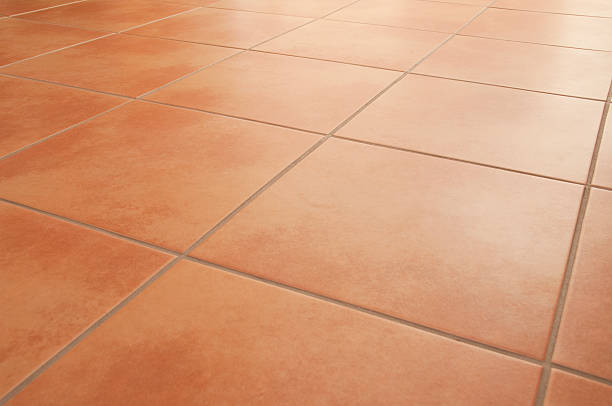Terracotta floor tiles have an enduring charm that has captivated homeowners and designers for centuries. Originating from ancient civilizations, these tiles offer a unique blend of rustic elegance and timeless appeal. In this article, we delve into the world of terracotta floor tiles, exploring their history, benefits, installation process, maintenance tips, design inspirations, cost considerations, and sustainable aspects.
Introduction to Terracotta Floor Tiles
Terracotta, which translates to “baked earth” in Italian, refers to a type of fired clay ceramic that has been used for various purposes throughout history. One of its most prominent applications is in flooring, where it adds warmth and character to any space.
History and Origins
The roots of terracotta floor tiles can be traced back to ancient civilizations such as the Greeks, Romans, and Egyptians. These cultures utilized terracotta not only for its functional properties but also for its symbolic significance and artistic expression.
Types of Terracotta Floor Tiles
Traditional Terracotta Tiles
Traditional terracotta tiles are made from natural clay and fired at high temperatures to achieve strength and durability. They often exhibit earthy tones ranging from reddish-brown to ochre, adding a warm ambiance to interiors.
Glazed Terracotta Tiles
Glazed terracotta tiles feature a protective layer of glaze that enhances their durability and resistance to stains and scratches. They come in a variety of colors and finishes, offering endless design possibilities.
Handcrafted Terracotta Tiles
Handcrafted terracotta tiles are artisanal creations known for their unique textures and irregularities. Each tile is meticulously crafted by skilled artisans, resulting in one-of-a-kind pieces that reflect the human touch.
Benefits of Terracotta Floor Tiles
Terracotta floor tiles offer several benefits that contribute to their popularity among homeowners and designers alike:
Durability
Terracotta tiles are renowned for their durability and longevity, making them suitable for high-traffic areas such as kitchens, hallways, and entryways.
Natural Aesthetic Appeal
The natural, earthy tones and textures of terracotta tiles add warmth and character to any space, creating a welcoming atmosphere.
Environmentally Friendly
Terracotta is an environmentally friendly material that is sourced from natural clay deposits and requires minimal processing.
Installation Process
Installing terracotta floor tiles requires careful planning and attention to detail:
Preparing the Subfloor
Before installation, the subfloor must be clean, level, and free of any debris or moisture.
Laying the Tiles
Terracotta tiles are typically laid using thin-set mortar or adhesive, ensuring proper alignment and spacing between tiles.
Grouting and Sealing
Once the tiles are in place, grout is applied to fill the gaps between them, followed by sealing to protect the tiles from stains and moisture.
Maintenance Tips
To keep terracotta floor tiles looking their best, regular maintenance is essential:
Regular Cleaning
Terracotta tiles should be swept or vacuumed regularly to remove dirt and debris, followed by mopping with a mild detergent solution.
Sealing
Periodic resealing helps maintain the integrity of the tiles and prevents moisture penetration and staining.
Avoiding Harsh Chemicals
Harsh cleaning products containing acids or abrasives should be avoided, as they can damage the surface of the tiles.
Design Ideas and Inspirations
Terracotta floor tiles offer endless design possibilities:
Rustic Charm
In rustic interiors, terracotta tiles complement natural materials such as wood and stone, creating a warm and inviting ambiance.
Mediterranean Style
Terracotta tiles are synonymous with Mediterranean-style homes, where they add authenticity and charm to both indoor and outdoor spaces.
Contemporary Elegance
In modern interiors, glazed terracotta tiles with sleek finishes lend a touch of elegance and sophistication.
Cost Considerations
The cost of terracotta floor tiles varies depending on factors such as the type, size, and finish:
Material Cost
Traditional terracotta tiles tend to be more affordable than handcrafted or glazed varieties.
Installation Cost
The cost of installation depends on factors such as the complexity of the project and the labor rates in your area.
Terracotta Floor Tiles vs. Other Flooring Options
When choosing flooring materials, it’s essential to consider how terracotta tiles compare to alternatives such as ceramic and porcelain:
Comparison with Ceramic Tiles
While ceramic tiles offer durability and versatility, terracotta tiles add a unique warmth and character that is unmatched.
Comparison with Porcelain Tiles
Porcelain tiles are known for their strength and water resistance, but terracotta tiles offer a natural aesthetic that is perfect for rustic and traditional settings.
Sustainable Aspects of Terracotta
Terracotta is a sustainable choice for flooring due to its natural composition and minimal environmental impact.
Conclusion
Terracotta floor tiles embody the timeless beauty of natural clay, offering a warm and inviting ambiance to any space. From their rich history and artisanal craftsmanship to their durability and sustainability, terracotta tiles continue to be a cherished choice for homeowners and designers alike.
